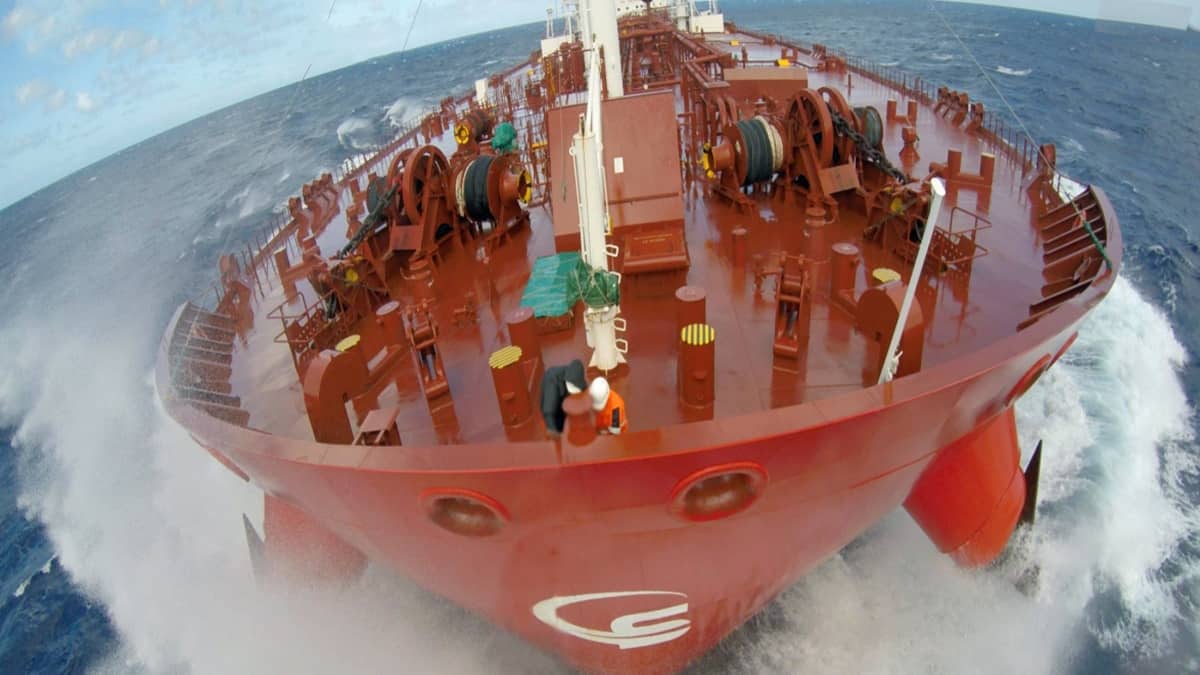Just when you think the markets cannot possibly get any crazier, the NYMEX WTI May crude futures contract closed on Monday at -$37.63 per barrel, the equivalent of someone saying, “Hey, I’ll pay you $75 million in cash to take this entire supertanker load of crude off my hands.”
The unprecedented plunge of crude pricing into negative territory underscores what’s already very apparent in the tanker sector: Global energy demand is evaporating due to the coronavirus and despite OPEC cuts, there’s no way to turn off the production spigot fast enough.
Oil is rapidly overflowing the world’s land-based storage capacity, after which it will have no place to go but into floating storage on tankers, removing those ships from the transportation trade.
Unlike the Brent futures contract, which is a paper contract, the WTI contract requires physical delivery of the commodity when the contract expires. The May WTI contract expires Tuesday and the ability to take physical delivery is now extremely limited. Morgan Stanley analyst Devin McDermott explained, “Only those who can take physical delivery can make a financial gain out of this. What the price action is telling you is that there are very few market participants in that group anymore, if any.”
Looking beyond the expiring May contract that’s garnering all the headlines, the WTI June contract closed down 18% on the day, at $20.43 per barrel. That’s a $5.14-per-barrel discount to the ICE Brent June contract, which fell 9% on the day to $25.57 per barrel, according to Argus Media.
Steepening contango
When oil markets are in “contango” — i.e., when the forward price is higher than the spot price — conditions are ripe for floating storage. The steeper the forward curve of crude oil, the more a charterer can pay for use of a tanker as a storage device and still profit from buying crude now and selling it later.
The higher the implied charter rate, the likelier that tanker stocks will rise, which is what happened on Monday. The broader market fell sharply, with the Dow down 592 points, and tanker equities went in the opposite direction.
“The tanker [stocks] spiked because the oil curve contango continues to steepen and there is an increasing risk of running out of storage,” Evercore ISI analyst Jon Chappell told FreightWaves.
He calculated that as of Monday’s oil-price close, the break-even storage calculation for a three-month period now equates to a tanker time-charter equivalent rate of $111,500 per day. That’s up from $101,000 per day as of April 15, $78,000 per day on April 13 and just $35,000 per day on April 5.
Jefferies analyst Randy Giveans told FreightWaves, “Although the WTI May price turning ridiculously negative is getting all the attention, it is not very meaningful to the actual market because that contract expires tomorrow and nobody wants to take physical delivery; there are zero bids for those contracts while many ETFs, hedge funds and banks are forced to sell.”
According to Giveans, “Everybody is now focused on June contracts, and even that is down … so the contango is steepening, thus the positive moves in tanker equities.” He estimated that the contango now supports six-month charters at rates near $120,000 per day.
Meanwhile, the fact that Brent futures are a paper contract and WTI futures are a physical-delivery contract could widen the WTI-Brent spread if the lack of storage capacity renders the WTI contract less tradable. In the past, a wider spread has incentivized U.S. crude exports on long-haul voyages, a positive for tanker fundamentals.
“A wider spread will incentivize more U.S. exports, both internationally as well as from the U.S. Gulf to the U.S Atlantic Coast, replacing imports to the U.S. Atlantic Coast from West Africa,” said Giveans.
Banner day for tanker stocks
Monday gains for U.S.-listed tanker stocks were across-the-board and trading activity was unusually heavy.
In the crude-tanker category, Nordic American Tankers (NYSE: NAT) rose by 19% in 4.3 times average volume; Frontline (NYSE: FRO) gained 13% (quadruple average volume); Euronav (NYSE: EURN) 10% (3.5 times average volume); and DHT (NYSE: DHT) 7.5% (double usual volume).
In the products category, Top Ships (NASDAQ: TOPS) jumped 21% (4.6 times average volume); Scorpio Tankers (NYSE: STNG) 18% (3.6 times average volume); and Ardmore Shipping (NYSE: ASC) 7% (four times average volume).
In the mixed-fleet category, Teekay Tankers (NYSE: TNK) gained 21% (triple average volume); Teekay Corp. (NYSE: TK) 21% (4.2 times average volume); Diamond S Shipping (NYSE: DSSI) 16% (triple average volume); Navios Acquisition (NYSE: NNA) 16% (double normal volume); Tsakos Energy Navigation (NYSE: TNP) 11% (3.1 times average volume); and International Seaways (NYSE: INSW) 8% (1.7 times average volume). Click for more FreightWaves/American Shipper articles by Greg Miller











